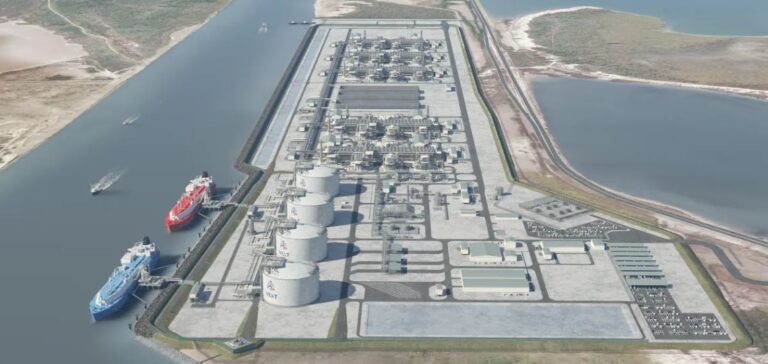NextDecade Corporation has entered into a framework agreement with Baker Hughes covering the expansion of the Rio Grande LNG terminal, specifically targeting liquefaction units (“trains”) numbered from 4 to 8. Under the terms of the agreement, Baker Hughes will supply NextDecade with specific equipment, including gas turbines and refrigerant compressors, as well as associated contractual maintenance services. The Rio Grande LNG project, already committed to its first three units, aims to significantly expand its industrial and commercial capacity. These additional trains are expected to gradually increase the terminal’s total liquefaction capacity, adding around 18 million tonnes per year to its current output.
Industrial and technological strategy
The agreement provides for Baker Hughes to deliver precise technologies, notably high-efficiency gas turbines and compressors specifically adapted for the liquefaction of natural gas. This technology primarily seeks to ensure operational efficiency and reliability for the infrastructure at the Rio Grande LNG terminal. Concurrently, Baker Hughes will deliver regular contractual maintenance services for all supplied equipment, thus strengthening long-term operational stability. Reliable maintenance of liquefaction equipment represents a critical factor in managing the industrial and financial risks associated with such infrastructure.
Commercial progress and project development
NextDecade is actively advancing commercial efforts for trains 4 and 5 of the Rio Grande LNG project, nearing the final investment decisions and subsequent launch of construction. To ensure successful development, several steps still need completion, notably securing final regulatory approvals, formalizing necessary commercial and financial agreements, and launching construction activities. Furthermore, NextDecade has already initiated preliminary regulatory processes for trains 6 to 8, planning their progressive integration into the existing site in alignment with anticipated international demand growth.
International economic and energy issues
The Rio Grande LNG terminal expansion occurs amid strong global demand for liquefied natural gas, especially in Europe and Asia. Through this project, NextDecade directly addresses economic and geopolitical challenges related to international energy security. Integration of advanced equipment provided by Baker Hughes contributes to the project’s global competitiveness by responding effectively to international demand and ensuring rigorous industrial management. The project’s economic success ultimately hinges on finalized contractual conditions, actual operational performance, and a favorable regulatory framework for U.S. LNG exports.






















